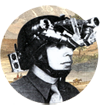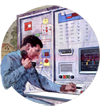Hi guys,
Hope everyone's first week is going well! I was hoping to get some ideas and suggestions from those of you who have any knowledge about what I guess I am calling access control. This is an area that I am unfamiliar with and trying to utilize all of my resources to learn more about:)
We would like to find some software for our computer center that will allow us to:
-require users to login and logout
-track who logs in and when
-prevents users from accessing certain controls and settings
-and return the computer to its original settings (so that nothing is permanently saved) upon logout












Comment from Ben Sheldon on July 6, 2007 - 4:42pm
Are those three T1's hot? That is some serious bandwidth. How our you expecting to use it?
I'm excited to hear that you are thinking about WiFi. You should talk with fellow VISTAs Ross, Josh, Matthew, and Cecille.
Comment from Morgan Sully on July 10, 2007 - 1:46pm
Hey Jim,
glad to see your excitement about the upcoming work. I reviewed your workplan and it looks like you've got an exciting year ahead of you. What are MPOEs?
m
"All that is possible is seeking expression though human beings."
Comment from Jim Mora on July 13, 2007 - 12:50am
Ben,
T1's are not hot yet. I just got pricing for a point to point (existing) and a T1 Frame relay to the Internet (AT&T). We want to go back and see if we are leveraging the Teleconnect funds to the max. I'll post when we go live.
Jim